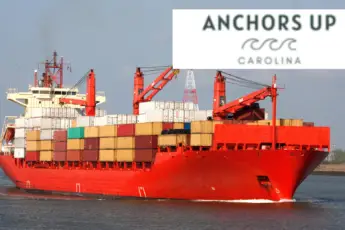When it comes time to connect your tow vehicle to the trailer, proper precautions must be taken. In the southern states like South Carolina, North Carolina, and Georgia, the boating season is extended because of the early spring and late fall. As a result of more extended summer-like months, the trailer of a boat is done frequently. Following these five tips for connecting a boat trailer to make each adventure flawless.
Insider Tips For Connecting A Boat Trailer
Ask for help
The most important tip is asking for help. When backing up a vehicle, many blind spots exist. Blind spots can lead to serious trouble, such as backing into more than just the trailer. People or other objects can be struck.
Aligning the receiver to the tongue of the trailer is like threading a needle. Both have to be aligned well for the trailer to sit correctly on the ball.
A passenger is best, but don’t be afraid to ask a by standard if you’re on your own. Most will be willing to lend a hand. Having someone guide, you will make the job quicker and safer. Don’t be afraid to ask for help.
Properly adjusting the tongue height
One of the most common mistakes is not adjusting the trailer jack to a height appropriate for receiving the trailer hitch. The jack should be just above the ball’s height to gauge proper alignment for lowering the trailer onto the tow vehicle.
When the trailer’s tongue is positioned too low, the hitch’s ball can strike the coupler, causing it to become bent potentially.
Ensure the trailer is high enough to back down on before beginning the process of aligning the truck to the trailer.
Connecting the chains and wiring
One of the first things that should be done after putting the truck in park when the trailer is lined up above the ball is to attach the chains and wiring.
The consequences are severe if this step is forgotten. Trailers come free, and without the chains attached, your boat and trailer will be sliding along down the road wildly out of control. Should the trailer come free, the chains will keep the trailer attached to the vehicle.
Equally as dangerous is the failure to connect the electrical harness that powers the lights and brakes in some cases. The lack of lighting can cause a vehicle following behind to crash into the boat and trailer. Even with the cable securely in place, take a walk around to inspect that all bulbs are functioning.
Removing the chocks
Fortunately, forgetting to remove the wheels’ chocks will not cause any damage for the most part. Most important is that they were in place when the trailer was stowed to prevent it from rolling.
Generally, when it’s time to get on the road and try to drive away, the trailer is locked in its position. You may need to back up slightly to free the pressure on the chocks for removal.
Once the chocks are removed, stow them inside the tow vehicle or in the boat where they will not slide around and cause damage.
Locking the coupling
When the trailer tongue is correctly seated on the hitch’s ball, take the final step to latch the coupling. This is a primary reason why trailers come free from the tow vehicle. You can even take it one step farther by applying a lock or pin to keep the mechanism from lifting while driving.
Trailer boat winch
Hand cracking a boat onto a trailer is not always a fun experience. Before you get on the road, make sure the winch cable is fastened to the eye hook on the boat’s bow. Also, ensure that the front of the boat is snug against the trailer roller. Lastly, secure the release on the winch so the cable doesn’t come free.
Engine trim
Many boat owners have done it, drive up the ramp with the engine tilted down, dragging the skeg against the ground.
Double-check that the engine is trimmed up and the lock is engaged to avoid the motor from falling if the hydraulics were to fail.
Interior object avoid them from flying
Remember that dock lines, lose gear, fenders, and lightweight objects can become airborne during trailering if not properly stowed away. If your boat is covered, sinch down the cover straps before venturing off.
Flying objects can damage other vehicles and cause you to lose valuable items when it could have been avoided.
Once the boat and trailer is attached to the truck, hop on board and inspect the inside of the boat.
Conclusion Connecting a boat trailer
Following these five tips will help avoid damage or injury. Damage to the rear of the truck can be expensive if the trailer’s tongue makes contact with the vehicle. Connecting a boat trailer to the tow vehicle becomes more comfortable with repetition; practice makes perfect. The most important factor is a helping hand from someone you bring along or a stranger in the area.







Leave a Comment
You must be logged in to post a comment.